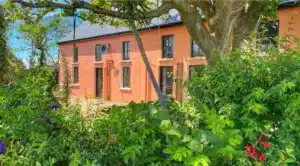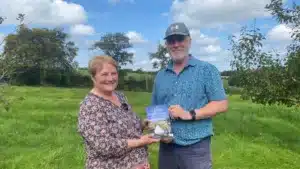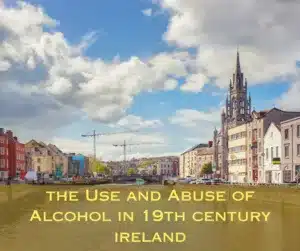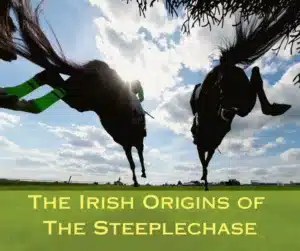Let us Gaze at the Moon and Stars: Agnes Mary Clerke
Mankind has long been fascinated with the Moon, filling up the night sky like a beacon to the vast unexplored regions beyond our planet. In this letter we will be introduced to a young girl from Skibbereen, Cork, whose fascination with astronomy led to a career that contributed directly to space exploration, and walking on the Moon.

This morning we’ll start with a place far away from all of us – but a place that all of us can see each day. In fact, over the coming days – November 14th to be precise, the moon will come closer to earth than it has since 1948 – a phenomenon known as a “supermoon” in everyday parlance.
I wonder, do you remember where you were as Neil Armstrong stepped onto the moon in 1969? It was one of those “firsts” that has burned into our collective memory and stayed there. Well, just three years later, the NASA astronauts landed on the moon for what was to be the last time in the modern age. On December 7th, 1972 – the Apollo 17 mission landed just to the south-east of a crater measuring about 6km across. We’ll come back to that crater a little later.
Look at the Stars, See How They Shine So Bright.
One hundred and twenty five years earlier, a young girl by the name of Agnes Mary Clerke gazed out her window at the night sky. It was a clear night and the moon was a wonder to behold- lighting up the frosty rooftops of her native Skibbereen.
It was 1847, and at the height of the Great Famine in Ireland – and her native town of Skibbereen and it’s hinterland was one the hardest-hit locations. The streets, lanes and fields were full of the starving, sick and dying. So, maybe it was just as well that this young girl’s attention was drawn up towards the heavens.
Her father was John Clerke – a local bank manager in Skibbereen who came from Dublin originally. He met and married Catherine Deasy from nearby Clonakilty and they settled in Skibbereen where each of their three children were born.
The Clerke family acquitted themselves well during those first terrible years of the Famine, supporting and helping out with local food distribution. They also chose to school their three children at home – both parents able to provide their children with a solid grounding in the Classics as well as science. However, it was a four inch telescope housed at the top of their building that provided the real attraction to a young Agnes. She developed her interest in astronomy from an early age and had started her own history of Astronomy by the age of fifteen.
The Writer and Scientist Emerges.
When Agnes was nineteen, her family relocated first to Dublin and then on to Queenstown (Cobh) in County Cork. This was followed by a move to Italy with her sister where she furthered her education in languages and astronomy. However, her dedication to the science of astronomy really started to gain hold when she settled in London. She was never a formally trained scientist, but she found her voice in sharing the discoveries and works of the astronomers with a wider scientific and lay audience. This period culminated with her publishing “A Popular History of Astronomy During the Nineteenth Century” in 1885. In the book, she managed to both capture and explain the great leaps forward that had been taken in the field over that time. In her own words:
“What has been done is little-scarcely a beginning; yet it is much in comparison with the total blank of a century past. And our knowledge will, we are easily persuaded, appear in turn the merest ignorance to those who come after us. Yet it is not to be despised, since by it we reach up groping to touch the hem of the garment of the Most High.”
She became widely recognised by her contemporaries and peers – winning a number of scientific prizes and was eventually elected as an honorary member of the Royal Astronomical Society in 1903. Only the third woman to that point to be “granted” such an honour.
Agnes Mary Clerke died in London on January 20th, 1907.
I’m writing this letter from what was the home of Agnes and her family – and I like to think of that little girl looking out these windows of a winter night, following her wonder and curiosity to the moon and stars – an innocent start to a life and career dedicated to sharing her knowledge and understanding with the wider world.
As for the Apollo 17 mission I mentioned earlier? The name of that moon crater they landed beside was the Clerke Crater – named for the life and accomplishments of Agnes Mary Clerke, born in Skibbereen, Ireland in 1842.
How about you? Do you have any budding scientists in your family? Do feel free to add your comments below and let me know.
That’s it for today – as always, do feel free to share any questions or stories of your own.
We’ll chat again next week!
Slán, Mike and Carina.







Only Plus Members can comment - Join Now
If you already have an account sign in here.